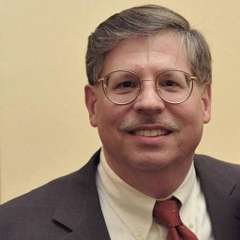Today's Sunday matinee performance by the Baltimore Symphony Orchestra delivered up two concert hall staples, along with a concerto that stands just one notch below the "A" list of concertante works for the violin. First up was the Prokofiev “Classical” Symphony. Composed in 1917, Prokofiev's First Symphony may well be the composer's most popular work; certainly it receives more than its fair share of performances in the United States. It's a bit of an outlier among Prokofiev's works, because it isn't very representative of the composer's musical style. To my ears, only in the third movement Gavotte – the one with the title that's most closely associated with the "classical" era – do I hear hints of Prokofiev's more recognizable style.
Guest conductor Juanjo Mena, who is chief conductor of the BBC Philharmonic, is familiar to Baltimore audiences. Indeed, his guest-conducting debut in North America was with the Baltimore Symphony. He led the BSO's forces in a rendition of the Prokofiev that was more "romantic" in tone than I usually hear. This was a big-boned approach to a piece that seems to work better when it's played with a crisp, light touch. Nevertheless, Mena built on each movement, each one better than the one coming before. Best were the Gavotte and the Finale, the latter taken at a breakneck speed for a rip-roaring conclusion.
The other symphony on the program was Beethoven's “Pastoral”. Although the symphonic poem wasn't formally "invented" until the time of Franz Liszt, in some ways this symphony could be considered the first such essay in the literature. Certainly its programme is very clear. For spending a day amid nature, Mena's conception was one of geniality. Tempi were on the slower side in the first two movements as well as the beginning of the "three-in-one" final movement. At times, the music flirted with losing its forward momentum. Certainly, however, there were wonderful moments of musical detail to savor. The clarinet passage that closes out the first movement as well as the oboe, bassoon and flute passages in the slow movement were as close to perfection as one is ever likely to hear. A momentary ensemble problem in the slow movement was only a minor distraction and didn't detract from overall enjoyment.
In the "Thunderstorm" and concluding "Shepherd's Hymn", things really came to bloom. The storm was appropriately ferocious, with incisive timpani accents punctuating the growling cellos and basses. Mena brought the symphony to a highly satisfying conclusion with a heartfelt presentation of the "Hymn of Thanksgiving": Beethoven's great paean to nature.
The biggest highlight of the concert was Glazunov's Violin Concerto in A minor. The soloist in the concerto was Jonathan Carney, who has been the BSO's concertmaster since 2002 (he was leader of the Bournemouth Symphony prior to that). During his tenure in Baltimore, Carney has soloed on numerous occasions, and his performances are always warmly received. The Glazunov concerto, composed in 1905, is one of those violin concertos that isn't "quite" in the top rank of fame. Rather, it resides one notch below, in company with Dvořák, Goldmark, Saint-Saëns and a few others. But many top violinists keep it in their repertoire including Hilary Hahn, Anne-Sophie Mutter, Itzhak Perlman and, of course, the Russians.
The concerto has an interesting structure, comprising two major movements linked by a substantial cadenza. I was more than impressed with Carney's performance. He brought rich lyricism to the violin part, with rhapsodic phrasing and impassioned passages leading up to the difficult cadenza, which he played with aplomb. This led into the thrilling finale in which Glazunov's trademark elements of glittering orchestration are brought into play, including concert bells and harp. Mena and the orchestra delivered rich accompaniment, meshing beautifully with the soloist. There were a few spots in the final movement where the brass overpowered the strings (at least that's how it sounded from my seat in the concert hall) but this is only a minor quibble in an otherwise a stellar performance.
Throughout the concerto, Carney thrilled with a virtuoso display of harmonics, double-stops, pizzicati and two-part tremolos. Intonation was flawless. The combined forces brought the concerto home with a rousing conclusion that carried the audience along on the crest of its own excitement. For concert-goers who don't get many chances to hear this piece, the performance delivered on all levels; certainly one that hit all the stops. Truly a remarkable and memorable achievement.




